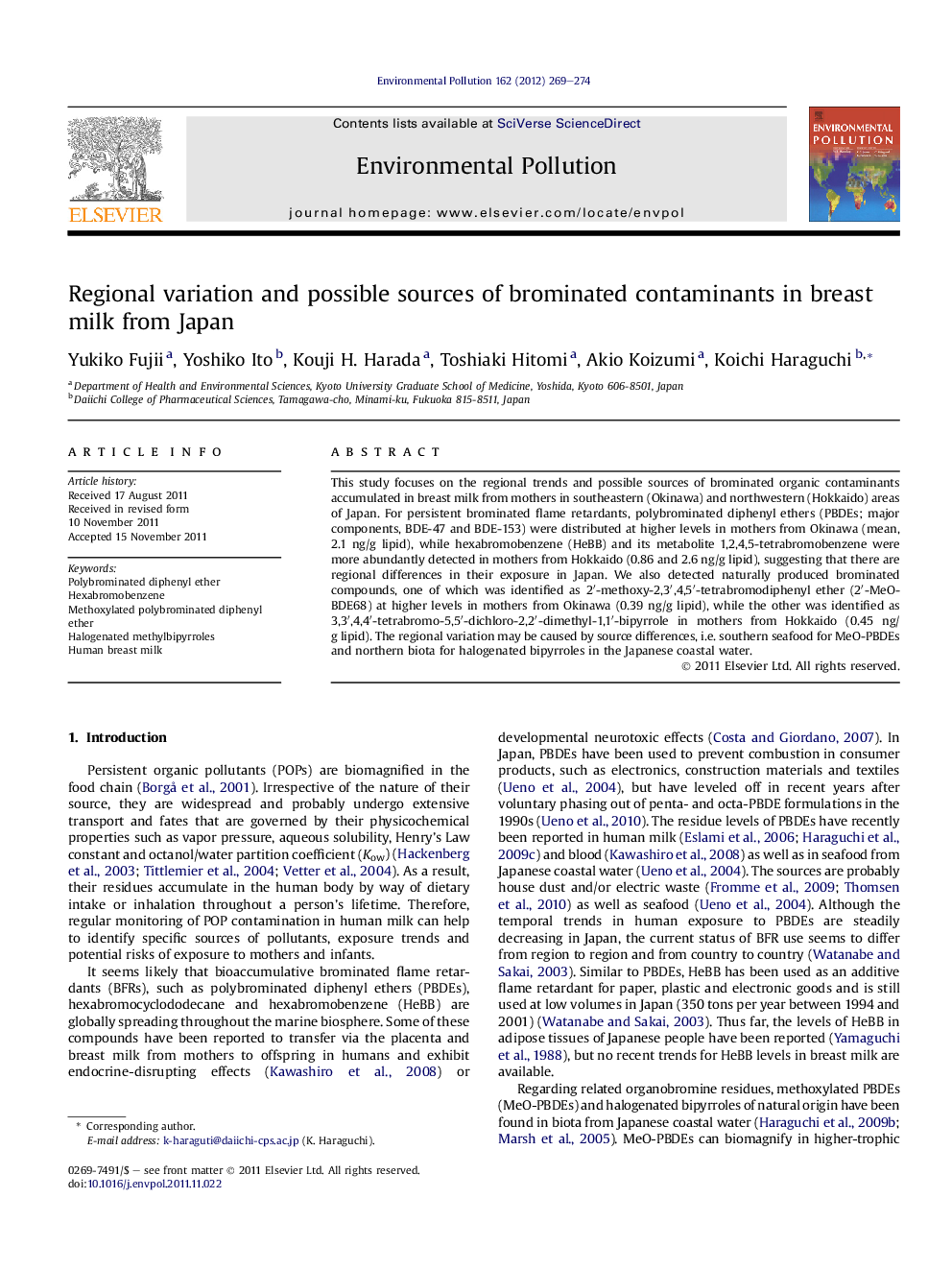| کد مقاله | کد نشریه | سال انتشار | مقاله انگلیسی | نسخه تمام متن |
|---|---|---|---|---|
| 4424981 | 1619210 | 2012 | 6 صفحه PDF | دانلود رایگان |

This study focuses on the regional trends and possible sources of brominated organic contaminants accumulated in breast milk from mothers in southeastern (Okinawa) and northwestern (Hokkaido) areas of Japan. For persistent brominated flame retardants, polybrominated diphenyl ethers (PBDEs; major components, BDE-47 and BDE-153) were distributed at higher levels in mothers from Okinawa (mean, 2.1 ng/g lipid), while hexabromobenzene (HeBB) and its metabolite 1,2,4,5-tetrabromobenzene were more abundantly detected in mothers from Hokkaido (0.86 and 2.6 ng/g lipid), suggesting that there are regional differences in their exposure in Japan. We also detected naturally produced brominated compounds, one of which was identified as 2′-methoxy-2,3′,4,5′-tetrabromodiphenyl ether (2′-MeO-BDE68) at higher levels in mothers from Okinawa (0.39 ng/g lipid), while the other was identified as 3,3′,4,4′-tetrabromo-5,5′-dichloro-2,2′-dimethyl-1,1′-bipyrrole in mothers from Hokkaido (0.45 ng/g lipid). The regional variation may be caused by source differences, i.e. southern seafood for MeO-PBDEs and northern biota for halogenated bipyrroles in the Japanese coastal water.
► In this study, we detected brominated organic contaminants in Japanese breast milk.
► Naturally produced brominated organic contaminants were also detected.
► Northern and southern Japan showed regional differences in these contaminants.
► Exposure to the contaminants is suggested to arise from different specific sources.
Journal: Environmental Pollution - Volume 162, March 2012, Pages 269–274